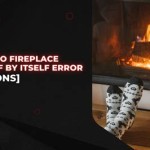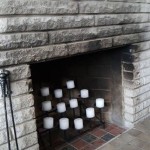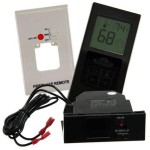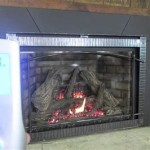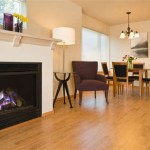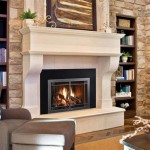Understanding Fireplace Stove Pipe Parts
Fireplace stove pipe parts are essential components in safely and efficiently venting combustion byproducts from a wood-burning stove or fireplace insert. A properly installed and maintained stove pipe system ensures that smoke, carbon monoxide, and other harmful gases are directed outside of the home, preventing potential health hazards and property damage. Understanding the different parts, their functions, and material considerations is crucial for anyone considering installing or maintaining a wood-burning appliance.
The primary function of stove pipe is to create a sealed passageway from the stove's exhaust outlet to the chimney. This pathway must be robust enough to withstand high temperatures, corrosive gases, and potential creosote buildup. Various types of stove pipe are available, each with specific characteristics and applications. Choosing the correct type and ensuring proper installation are paramount for safe and effective operation.
Key Components of a Stove Pipe System
A complete stove pipe system consists of several key components, each designed to perform a specific function. These components work together to create a secure and effective venting system.
*Stove Adapter:
This component connects directly to the stove's exhaust outlet. It is typically a short section of pipe with a specific diameter and a crimped end for easy insertion into the stove collar. Adapters are often made of heavy-gauge steel or cast iron to withstand the high heat generated at the stove's outlet. The adapter's primary function is to provide a secure and airtight connection between the stove and the rest of the pipe system. *Straight Pipe Sections:
These are the standard lengths of pipe that connect the stove adapter to the chimney connector. They are available in various lengths and diameters to accommodate different installation requirements. Straight pipe sections are typically made of single-wall or double-wall steel, depending on the application. The length and number of straight pipe sections will depend on the distance from the stove to the chimney and the desired configuration of the venting system. *Elbows:
Elbows are angled pipe sections used to change the direction of the stove pipe. They are available in various angles, such as 45 degrees and 90 degrees, to accommodate different room layouts and chimney configurations. Elbows are typically made of the same material as the straight pipe sections. Minimizing the number of elbows in a stove pipe system is generally recommended, as each elbow can increase resistance to airflow and potentially contribute to creosote buildup. *Chimney Connector:
This component connects the stove pipe to the chimney flue. It is typically a Tee section with a cleanout cap or a slip connector that slides into the chimney flue. The chimney connector must be properly sized to match the diameter of the chimney flue. It also needs to be a secure and airtight connection to prevent exhaust gases from escaping into the home.Material Considerations for Stove Pipe
The material used in stove pipe construction significantly impacts its performance, durability, and safety. Common materials include single-wall steel, double-wall steel, and stainless steel. Each material offers different advantages and disadvantages in terms of heat resistance, corrosion resistance, and cost.
*Single-wall Steel:
This is the most basic type of stove pipe, typically made of 24-gauge or 22-gauge steel. Single-wall pipe is relatively inexpensive and easy to install. However, it radiates a significant amount of heat, which can be a safety hazard if it is located too close to combustible materials. Single-wall pipe is typically used for connecting the stove to the chimney in rooms where clearances to combustibles can be maintained according to manufacturer specifications and local building codes. It is generally not recommended for passing through walls or ceilings. *Double-wall Steel:
Double-wall stove pipe consists of two layers of steel with an air gap between them. This design reduces the amount of heat radiated by the pipe, making it safer to use near combustible materials. Double-wall pipe is more expensive than single-wall pipe but offers improved safety and performance. It is often used in situations where clearances to combustibles are limited or where a more aesthetically pleasing appearance is desired. *Stainless Steel:
Stainless steel stove pipe is the most durable and corrosion-resistant option. It is also the most expensive. Stainless steel pipe is available in both single-wall and double-wall configurations. It is an excellent choice for situations where the stove pipe is exposed to harsh environmental conditions or where a long lifespan is desired. Stainless steel is particularly resistant to the corrosive effects of creosote and other combustion byproducts.Installation and Maintenance of Stove Pipe Systems
Proper installation and regular maintenance are crucial for the safe and efficient operation of a stove pipe system. Incorrect installation can lead to dangerous conditions, such as chimney fires and carbon monoxide poisoning. Regular maintenance, including cleaning and inspection, can help prevent these problems and extend the lifespan of the system.
*Installation Guidelines:
Stove pipe should be installed according to the manufacturer's instructions and local building codes. This typically involves ensuring proper clearances to combustible materials, using the correct pipe diameter, and securing all connections with stove pipe screws. The stove pipe should also be installed with a slight upward slope to facilitate the flow of exhaust gases. All seams and connections must be airtight to prevent leaks. *Regular Cleaning:
Creosote, a flammable byproduct of wood combustion, can accumulate inside the stove pipe. Regular cleaning is essential to prevent creosote buildup and reduce the risk of chimney fires. The frequency of cleaning will depend on the type of wood burned, the efficiency of the stove, and the frequency of use. It is generally recommended to inspect the stove pipe at least once a year and clean it as needed. *Inspection and Repair:
Regular inspection of the stove pipe system can help identify potential problems, such as corrosion, leaks, and damaged components. Any damaged or worn parts should be replaced immediately. It is also important to ensure that the chimney is in good condition and that the flue is properly sized for the stove. A professional chimney sweep can perform a thorough inspection and recommend any necessary repairs or maintenance.Selecting the correct stove pipe parts, performing a meticulous installation, and implementing a proactive maintenance schedule are vital to ensure the safe and efficient operation of any wood-burning appliance. Understanding these elements will contribute to a safer home environment.

Chimney Installation Parts

Stainless Steel Class A Pipe 6

Wood Stove Installation Fireplace

Chimney Installation Parts

Tlc Chimney System

Installing A Wood Stove

Chimney Installation Parts

5 Inch Double Wall Stove Pipe Insulated Chimney

Wood Stove Chimney Installation Diagrams Pipe Sugnaux Swiss

Fireplace Stoves Parts Carbon Steel Chimney Flue Pipes For Pellet Stove China Pipe Made In Com
Related Posts


